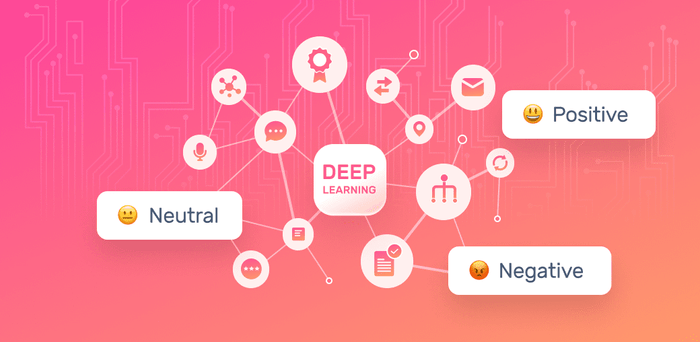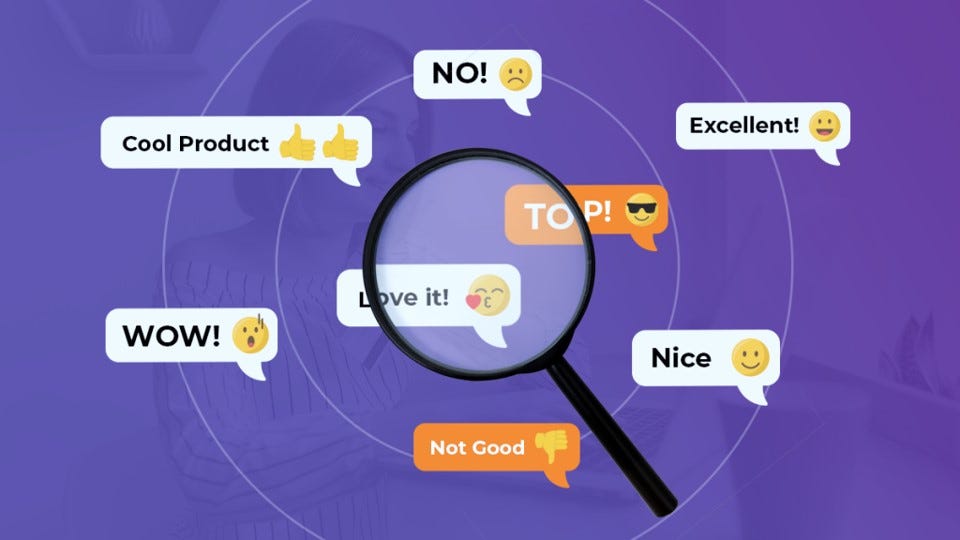In today’s digital age, social media has become a powerhouse of information and communication. People from around the world use platforms like Facebook, Twitter, Instagram, and LinkedIn to share their thoughts, opinions, and experiences. This massive influx of user-generated content has opened up exciting opportunities for businesses and researchers to gain valuable insights through sentiment analysis. In this article, we’ll dive into the world of the best social media sentiment analysis tools to help harness the power of social media data.
Best Social Media Sentiment Analysis Tools: Harnessing Insights for Business Success

Introduction to Sentiment Analysis
Sentiment analysis, also known as opinion mining, is a process that involves using natural language processing (NLP) and machine learning techniques to determine the emotional tone and attitude expressed in a piece of text. This text could be a tweet, a customer review, a news article, or any other form of user-generated content.
The Importance of Understanding Sentiments
In a world inundated with data, understanding the sentiments behind the data is crucial for businesses and individuals alike. Sentiment analysis provides insights into how people perceive brands, products, services, and current events. By understanding sentiments, companies can make informed decisions to improve their offerings and enhance customer satisfaction.
Top Benefits of Social Media Sentiment Analysis
- Customer Insights: Social media sentiment analysis allows businesses to gauge how customers feel about their products or services. This information can be used to make product improvements and tailor marketing strategies.
- Crisis Management: By monitoring sentiments on social media, companies can detect negative trends early and address potential crises before they escalate.
- Competitor Analysis: Sentiment analysis helps in understanding how a brand stacks up against its competitors in the eyes of consumers.
- Content Strategy: Insights from sentiment analysis can guide content creation by identifying topics that resonate positively with the target audience.
Key Features to Look for in Sentiment Analysis Tools
- Accuracy: The tool should provide accurate sentiment classification to ensure reliable insights.
- Multi-Lingual Support: Since social media is global, a tool that supports multiple languages is essential.
- Real-time Monitoring: Timely insights enable quick responses to emerging trends or issues.
- Customization: The ability to tailor the analysis to specific industry or brand needs.
10 Best Social Media Sentiment Analysis Tools
1. AIM Insights
AIM Insights offers real-time monitoring and in-depth sentiment analysis. It tracks brand mentions across various platforms and provides sentiment scores.
2. Talkwalker
Talkwalker offers comprehensive sentiment analysis, along with powerful analytics and reporting features.
3. Lexalytics
Lexalytics specializes in NLP and sentiment analysis. It offers industry-specific insights and detailed sentiment reports.
4. Socialbakers Suite
Socialbakers Suite provides sentiment analysis combined with competitive intelligence, helping businesses stay ahead.
5. Hootsuite Insights
Hootsuite‘s sentiment analysis feature is part of its social media management suite, offering a holistic approach.
6. Mention
Mention offers real-time monitoring and sentiment analysis, catering to businesses of all sizes.
7. Semrush
Semrush provides sentiment analysis along with a suite of SEO and content marketing tools.
8. Clarabridge
Clarabridge offers AI-driven sentiment analysis to extract actionable insights from customer feedback.
9. NetBase Quid
NetBase Quid specializes in social media analytics, including sentiment analysis for deeper consumer understanding.
10. IBM Watson Natural Language Understanding
IBM Watson offers advanced sentiment analysis capabilities powered by AI and machine learning.
How to Choose the Right Tool for Your Needs
Selecting the best tool depends on factors like your business goals, budget, and required features. Consider factors like ease of use, data accuracy, and scalability.
Steps to Conduct Effective Sentiment Analysis
- Data Collection: Gather a diverse set of data from social media platforms.
- Preprocessing: Clean and prepare the data by removing noise and irrelevant information.
- Sentiment Classification: Use NLP techniques to classify the text as positive, negative, or neutral.
- Data Interpretation: Analyze the results and extract actionable insights.
Case Studies with Record-Breaking of The Best Social Media Sentiment Analysis Tools
Case Study 1: The #IceBucketChallenge
The ALS Association saw an unprecedented surge in donations and awareness with the #IceBucketChallenge. By leveraging sentiment analysis tools, they were able to measure positive engagement and identify key influencers who drove the campaign to viral success.
Case Study 2: Nike’s “Dream Crazy” Campaign
Nike’s “Dream Crazy” campaign featuring Colin Kaepernick generated both support and backlash. Using sentiment analysis, Nike monitored real-time reactions and strategically responded to maintain brand image and engagement.
Tweets or Quotes from Influencers
“Sentiment analysis is a game-changer for brands. It helps in understanding customer emotions and improving marketing strategies.” – @MarketingGuru
“Real-time sentiment analysis is essential for crisis management. It enables brands to address issues promptly and maintain a positive reputation.” – @SocialMediaExpert
Challenges in Sentiment Analysis and How to Overcome Them
- Sarcasm and Irony: Contextual understanding helps in correctly interpreting such instances.
- Language Variations: Tools with multi-lingual support can overcome this challenge.
- Subjectivity: Combine sentiment analysis with other metrics for a holistic view.
Future Trends of The Best Social Media Sentiment Analysis Tools
The future of sentiment analysis is poised to be significantly enhanced by advancements in artificial intelligence, promising greater accuracy and a nuanced understanding of human emotions. AI will continue to evolve, offering deeper insights and more sophisticated tools that can analyze and interpret sentiments in a comprehensive manner.
- Enhanced Accuracy
- AI advancements will lead to more precise sentiment analysis, reducing errors and improving reliability.
- Deep Learning Integration
- The use of deep learning models will enable the detection of subtle and complex emotional nuances in text.
- Contextual Understanding
- AI will improve in understanding context, sarcasm, and irony, making sentiment analysis more accurate.
- Multimodal Analysis
- Future tools will combine text, images, and videos for a comprehensive sentiment analysis.
- Real-Time Adaptability
- AI-driven sentiment analysis will offer real-time insights, allowing businesses to respond instantly to trends and crises.
- Personalized Insights
- Tools will provide more tailored insights based on specific industry needs and individual customer behaviors.
- Cross-Lingual Capabilities
- Enhanced multi-lingual support will allow sentiment analysis across diverse languages and dialects.
- Ethical AI
- The development of ethical AI frameworks will ensure bias-free sentiment analysis, promoting fairness and inclusivity.
- Integration with Other Technologies
- Sentiment analysis will integrate seamlessly with other AI technologies like chatbots, CRM systems, and predictive analytics.
- User-Friendly Interfaces
- Future tools will have more intuitive interfaces, making it easier for non-experts to leverage sentiment analysis effectively.
- Scalable Solutions
- AI will enable sentiment analysis tools to handle larger datasets efficiently, making them scalable for businesses of all sizes.
- Proactive Decision Making
- Advanced sentiment analysis will empower businesses to make proactive decisions based on predictive insights, rather than reactive ones.
- Enhanced Emotional Granularity
- Tools will be capable of distinguishing between a broader range of emotions, providing deeper insights into customer sentiments.
Conclusion
Social media sentiment analysis has revolutionized the way businesses understand and engage with their audience. By leveraging the power of data and technology, companies can adapt, innovate, and stay ahead in an ever-changing landscape.
Ready to explore the world of sentiment analysis for your business? Contact AIM Technologies today to request a personalized demo of our cutting-edge sentiment analysis tools. Gain deep insights from social media data and make informed decisions that drive your success.
FAQs
Is sentiment analysis only applicable to English content?
- No, many sentiment analysis tools support multiple languages, allowing analysis of content in various languages.
How often should I perform sentiment analysis?
- It depends on your goals and industry. Real-time monitoring is essential for rapid responses, while periodic analysis can provide broader trends.
Can sentiment analysis tools differentiate between subtle emotions?
- Advanced tools utilize deep learning techniques to capture nuanced emotions beyond positive, negative, and neutral.
What industries benefit the most from sentiment analysis?
- Virtually any industry can benefit, but sectors heavily reliant on customer feedback, such as hospitality and e-commerce, find sentiment analysis particularly valuable.
How do sentiment analysis tools handle emojis and slang?
- Many tools are equipped to handle emojis and slang by incorporating them into their analysis algorithms.




